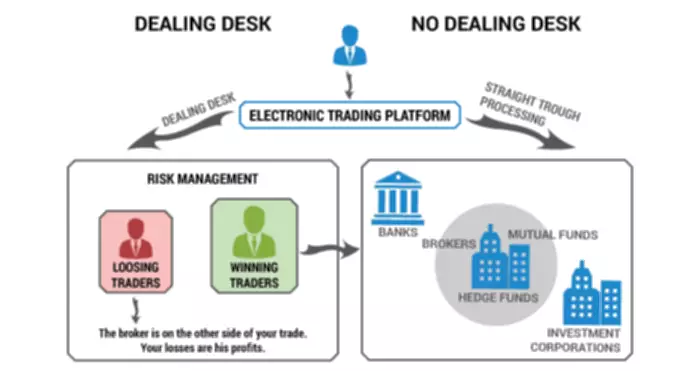In such cases, investors should give significance to regularly revising their asset allocation over the lengthy run. Some stocks take time to interrupt out of their comfort zone, which implies that you have to wait to earn returns that might be many occasions greater than what you had invested. Overall, lively investing is whenever you determine to trade regularly with the intent to exceed the average return of an index. Passive funding also doesn’t provide the same flexibility as the active one. In case the investor withdraws, he can be promoting models of the overall fund, parts that underperformed as properly as outperform.
- The risk think about active investing is sort of excessive and therefore, the buyers should be cautious about their investments.
- Therefore, there could be just about no concept of a perfect investing technique.
- Active management, then again, requires ongoing analysis, frequent buying and selling, and managerial expertise, resulting in larger costs.
- Whenever any nation travels this journey, it creates a broad based mostly, numerous opportunity set, which is tough to capture by passive investing.
- S&P Dow Jones, a world financial entity, conducts a radical evaluation of the energetic versus passive funds debate.
This fund simply tracks the Nifty 50 index, which is the weighted common of the highest 50 companies listed in Nifty. Say you invest Rs. 100 in this fund, it mechanically gets allocated to the highest 50 companies as per their weight within the Nifty 50. While an lively investor managing their own investments could make such acutely aware selections. Hence a passive investor not only misses the preliminary rally in structural tales, but additionally participates in a big a half of the worth destruction before the inventory will get excluded.
What Are The Advantages Of Lively Investing?
Let’s take a glance at the professionals and cons of both these sorts of funds to raised perceive their differences and position in your portfolio. So far within the first two months of 2022, only four funds have outperformed Nifty 50 TRI forming just 28% of the total large cap AUM. In truth, if we see the pattern for last 3 years, was the only respectable 12 months for the massive cap universe where a majority of them outperformed.

Yes Bank was included at worth of INR 163/share on 27-Mar-15 and was excluded at INR 54/share on 19-Mar-20 (adj. for bonus/split/capital raise). An index ETF like Nifty BeES is amongst the best examples of a passive funding. The portfolio of an index ETF will mirror that of the benchmark index just like the Nifty 50 that it is made after.
Which Investment Products Are You Fascinated In?
Similarly, any modifications within the index methodology make it difficult for the passive fund to regulate its holdings accordingly. This can even end in tracking errors, especially if the fund and the index do not align with such modifications. A good instance of active investing is ‘equity mutual funds’, where fund managers are responsible for deciding which fund will go in and out. One of the largest downsides of actively managed funds is their greater expense ratio.
It’s a pool of money that’s managed by a fund manager and a staff of analysts. They handle the shopping for and selling of shares on a day-to-day basis. If you propose to invest in an actively managed mutual fund, you might be exposing your self to an expense ratio as well, which is usually higher than in passive funds. This distinction may be sufficient to dent your portfolio by a quantity of lacs as you approach your target or maturity. SPIVA, quick for S & P Indices versus Active, serves as the industry’s yardstick for evaluating the performance of actively managed funds in comparability to the appropriate market benchmarks.
If one is prepared to pick up sectoral leaders early returns can even be greater than the sector CAGRs. Prior to 1991 liberalization, the Index largely consisted of old financial system shares flourishing during the License Raj. Anyone who invested in the index then would have missed multi-bagger alternatives in Financials and IT for a long time frame.
2 Why Are Passive Funds Better Than Lively Funds?
So energetic or a passive mode doesn’t have much impression on the tax entrance. From monitoring benchmarks and errors to rebalancing insurance policies and disclosing holdings, passive investing ensures that what you see is what you get and experience. The rise of passive investing is reflected within the massive dimension of Assets Under Management (AUM).
Rebalancing refers to buying/selling cryptos to go well with present market conditions and maintain the desired risk-to-return ratio. If a portfolio is left unattended for a long length, it’d just go for a toss. Active investing refers to the technique the place the investor actively participates in the ongoing buying and promoting of assets in a bid to beat the common index returns.

Individual sectors are inclined to outperform immensely during their respective intervals of tailwind. Outsized allocations can only be taken when one has a conviction on the underlying transformation. Funds find yourself creating massive alphas for his or her investors by taking sectoral calls.
Index Funds Vs Mutual Funds – What’s The Difference?
A passive fund follows the composition of the index and any modifications within the index might be routinely mirrored in the fund’s holdings. This simply implies that traders can not make any choice to adjust https://www.xcritical.in/ their portfolios based mostly on evolving market circumstances or particular person preferences. Hence, they might be a sensible choice in your portfolio if your threat tolerance is average to excessive.

Even should you buy and forget and don’t pay a lot consideration to those assets, you are via. Because you literally invested in a basket that represents your curiosity. While a passive investor can even do it, an energetic investor could be far more progressive when deploying such techniques. Therefore, rather than simply taking sides on these investing methodologies, let us consider their advantages and drawbacks.
While lively investing can potentially deliver superior returns beneath sure circumstances, passive investing presents a disciplined, cost-effective, and dependable path for many traders. By understanding the nuances, evaluating performance, and aligning with regulatory guidelines, traders could make informed decisions that optimize their long-term funding outcomes. The portfolio of the passively managed funds is structured based mostly on the index, asset, or safety that it tracks. The property in the portfolio are often in the identical weightage as the index. Hence, there isn’t a scope for customization of the portfolio which could be availed in actively managed funds.
Disadvantages Of Energetic Investing
The time spent out there is way more necessary than timing the market. And if you constantly want to make good returns, you should be taught, unlearn and relearn continuously. It takes plenty of apply and understanding of the market to continuously make good bets. Therefore, if you are already late to the investing bandwagon, lively investing is in all probability not the right mode of entry for you. If you may be actively investing, you’ve far more flexibility to safeguard your investments within the bouts of volatility and in addition to amp them up if you really feel the time is ripe.
In principle, lively funds, with their meticulous stock selection, should outperform their benchmarks. But in reality, they usually fall quick, constantly underperforming the market indexes. Since passive funds only purpose to duplicate the efficiency of a benchmark index instead of outperforming it, the extent of management required is minimal. Also, expenses related to research, evaluation, and buying and selling are fewer. As discussed above, both actively investing and passive investing have their advantages and drawbacks.
The actions of lively investors create indices which are adopted by passive traders a lot later. The end result of participation in compounding journey with a lag, dilutes the magic of compounding to a big extent. Compounding calculations counsel an alpha of ~3% on INR 1 crore over 30 years is INR 70 crores.